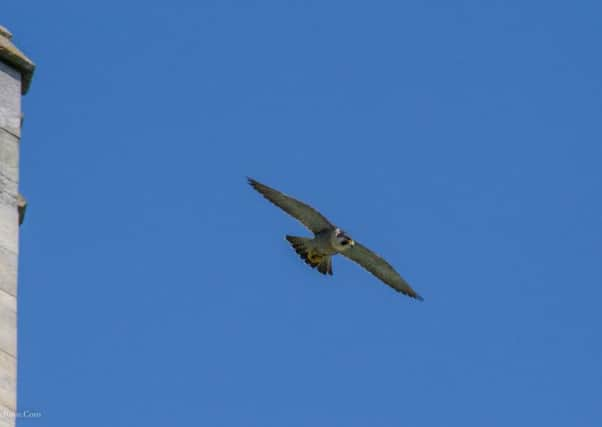Peregrines return to Chichester Cathedral
This article contains affiliate links. We may earn a small commission on items purchased through this article, but that does not affect our editorial judgement.


James Cameron, who works at the nearby Novium Museum, spotted the birds flying around the spire.
“Pigeons and herring gulls scarpered,” he said
Tim Webb, from the RSPB, confirmed the peregrines were back.
Advertisement
Hide AdAdvertisement
Hide Ad“There are peregrines at Chichester Cathedral and they are currently in their mating season, so the male will be showing-off and both will be very visible,” he said.
“We are planning our event to show off the birds and their young via CCTV at the cathedral and hope to be on site to tell the birds’ remarkable story and urban colonisation from April 9.”
Each year, the RSPB sets up its popular stall in the Cloisters Cafe and hundreds of people arrive to look through telescopes at the birds of prey and also watch live feeds.
This year sees an update in kit, with a new nesting scrape, a new camera, microphone and cables.
Advertisement
Hide AdAdvertisement
Hide Ad“The scrape is the artificial nest,” said Tim. “It’s effectively a grit-filled tray. The parents will create a depression in the grit for the eggs to lie-in. “Traditionally, peregrines nested on cliff edges so the slight depression was essential to prevent the eggs from either rolling or being blown off the ledge.
“They lay three to four eggs, which will hatch about a month after being laid (usually around May). The chicks grow fast and will be taught how to fly, hunt and look after themselves.
“Within a couple of months (July/August) the young will leave the nest and soon after, the parents will send them off to find their own territories and find mates. They usually mate for life.”
Have you spotted the peregrines yet? Email pictures to [email protected]